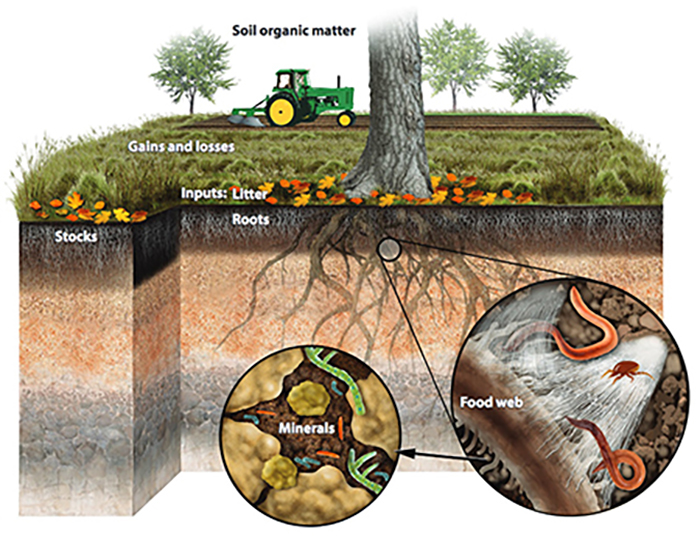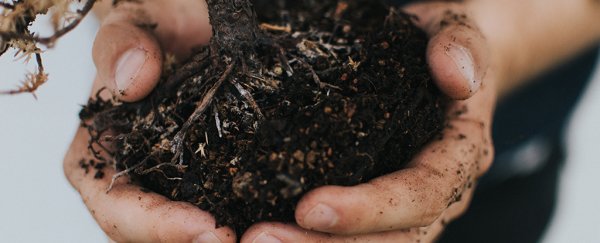Soil minerals just a little way underground could act as a huge carbon sink to help balance out the dangerous levels of carbon dioxide in our atmosphere, according to new research.
It's thought that the earth beneath our feet is holding up to three times as much carbon as is found in the atmosphere. If we can tap into its potential to suck even more carbon pollution out of the air, it would be a massive advantage.
However, proper management of the soil is needed if we're going to try and reduce the levels of CO2 in the air, according to an international team of researchers. That might mean changing farming methods and other practices.
The researchers want to see more studies looking at the potential of soil and its minerals as a carbon sink, and have compared the gaps in our knowledge about what's underground with how little we currently know about the depths of the ocean.
"Hardly anyone has been down there, and they just found a new species of octopus," says one of the team, Marc Kramer from Washington State University.
"We know more about the surface of Mars than we do about either the oceans or soils on Earth."
Kramer was part of a team looking specifically at how minerals in soil act to control the amount of nitrogen and carbon it can hold.
More than half the carbon stored in soil is over 30 centimetres (1 foot) below the surface, Kramer says, and at that depth the organic matter in the soil is almost entirely associated with minerals.
Studying samples from China and Puerto Rico, the team found that mineral interactions rather than microbial activity was influencing carbon and nitrogen levels, which is important to know if we want to maximise how much carbon the ground traps.
"Our results provide the first direct evidence that soil depth trends could be driven by mineral association instead of in situ processing," write the researchers.
The results add to previous research published last month by Kramer and other experts that suggests properly managed soil could be a bigger carbon reserve than we thought.
 (Washington State University)
(Washington State University)
Planting more annual crops and reducing tillage are some of the ways that soil can be encouraged to hang on to more carbon, but both studies emphasise that a lot more research into soil composition and soil cycles is needed if we're going to rely on it to counterbalance global warming effects.
Of course the best course of action is to cut down on the amount of carbon dioxide we're generating in the first place, but we'll take any help we can get – and scientists are looking into various methods for locking carbon away.
They range from commercial plants that suck CO2 straight out of the air, to improving the ocean's carbon capturing capabilities. According to the new research, soil and its minerals could have a big part to play too.
Right now though there are still a lot of uncertainties: a study published last year suggested soil carbon storage is going to take much longer to take effect than previously thought.
With that in mind, it's still early days for figuring out how best to utilise this vast potential carbon sink we're all living on top of, but we need to find the best balance between protecting the soil and producing enough food to feed a growing population.
And that means taking an even closer look at soil minerals.
"If we lose momentum on carbon research, it will stifle our momentum for solving both climate and land sustainability problems," says Jennifer Harden from Stanford University in California.
The latest study has been published in Biogeochemistry Letters.
